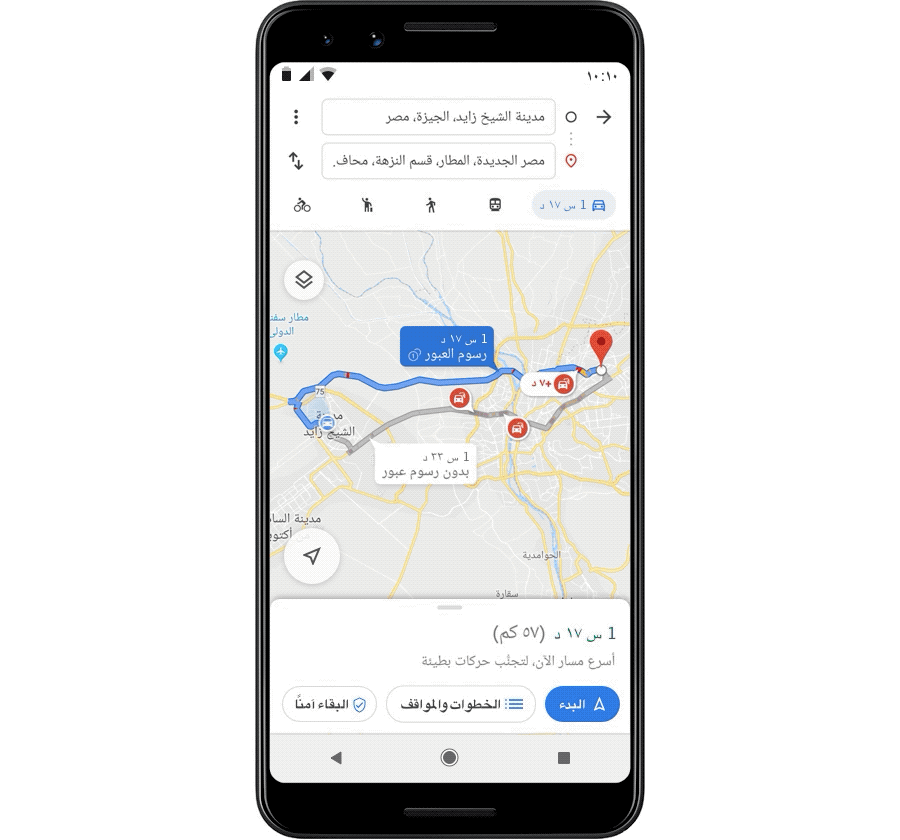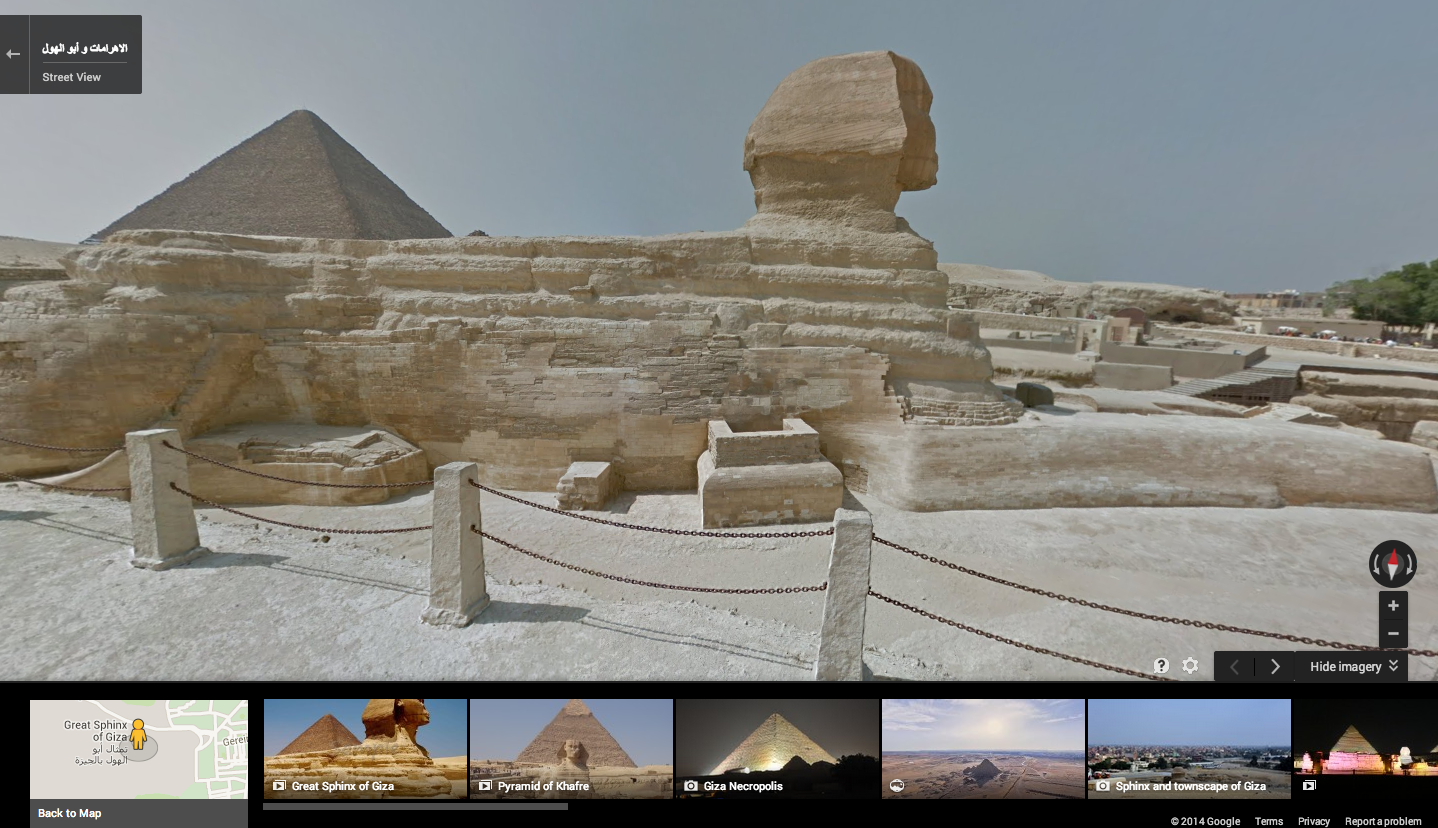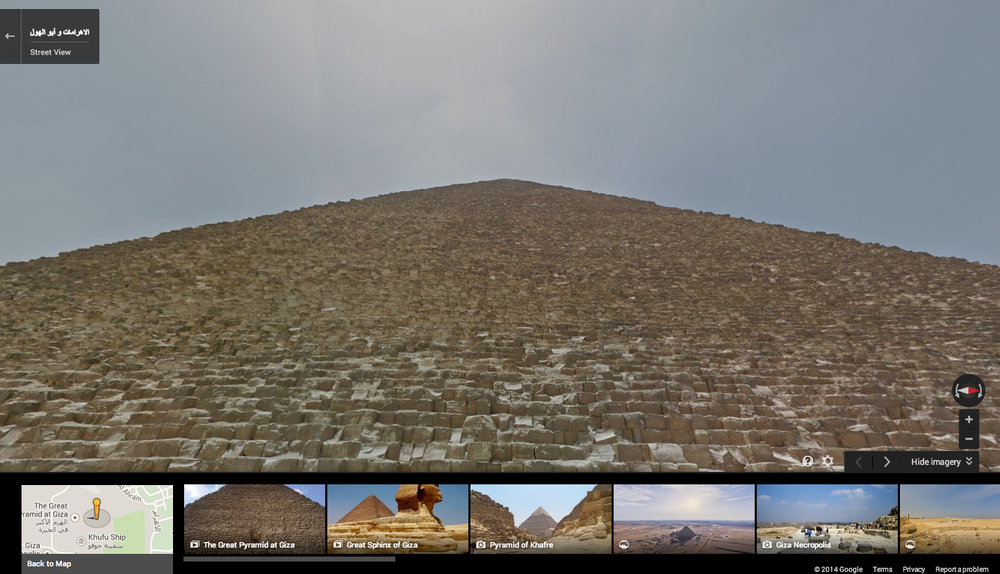Today, we’re announcing new products in the Middle East and North Africa, a region connected by a common language, Arabic. The Arabic language, beautiful yet complex, is written from right-to-left, has a range of dialects, and one word can mean many different things depending on the context. For our products to be helpful, they need to understand the nuances of the language.
Visual Search in Arabic
Cinema, music and sports are three of the things people search for the most in Arabic. We’re now showing answers to popular questions in a simple box, so that you can get information faster. For example, if you’re looking to watch a movie, you will find in one box all the movie theaters on the map, the list of movies being aired, showtimes and sometimes a link to book your ticket. Similarly, if you’re searching for Mo Salah, the Egyption football star, you will see his biography, his past goals with Liverpool and the Egyptian National team, and also videos of games and tournaments he played in.
Celebrities are another topic that people search for a lot. So we’re launching Cameos, a feature on Google Search where celebrities can post videos on the Search homepage answering popular questions about them. For example, if you search for Egyptian actress Yosra El Lozy, you can scroll through videos where she answers many questions like what is a cause she cares about and what is the best advice she got as an actress.

Cameo feature on Search in Arabic
Google Assistant: “Okay Google, speak to me in Arabic.”
Talking to your phone to get information from Google or to get things done is becoming more popular. In Arabic too, people use it to navigate traffic, search the web, or play music. Earlier this year, we launched the Assistant in Egypt and Saudi Arabia, and people have been asking it to make calls, sing lullabies for children and listen to music (“Okay Google, play Fayruz” is one of the most popular commands.)
Today, the Assistant will be available in an additional 15 countries in the region—United Arab Emirates, Yemen, Oman, Kuwait, Bahrain, Qatar, Iraq, Morocco, Algeria, Tunisia, Libya, Lebanon, Jordan, Palestine and Mauritania.
Google Maps: navigate the world, get things done, and stay safe
Whether you’re driving or a passenger, everyone wants to feel safe on the road. We’re introducing a feature that gives you an “off-route alert” when your driver has deviated from the suggested route by more than 500 meters. You can also choose to share your live trip with friends and family directly from that screen so they know where you are.

Stay Safer feature on Maps
Helping motorcyclists get through traffic with Google Maps in Egypt
There are more than four million motorbikes in Egypt and the heavy Cairo traffic can affect their journey times. Motorcycle mode on Maps helps motorcyclists avoid congestion on Egypt’s busiest highways by following shortcuts and local roads and have an accurate expected arrival time. This feature is coming next to Algeria and Tunisia, and more countries soon.

Image of motorcycle mode on Maps in Egypt
Investing in digital skills: Unlocking opportunities for young Arabs
By next year, one in five jobs in the Arab world will require digital skills. In 2018, we launched our Arabic digital skills program, “Maharat min Google,” which has reached more than 500,000 young people, women and underprivileged students. 130,000 of those were able to find jobs, grow their careers and their businesses. We want to continue that effort. So today, Google.org is giving a $ 1 million grant to Injaz, an NGO that specializes in youth training, to scale their digital skills program to reach a further 100,000 people in 2020.
Every day, people in the Middle East and North Africa turn to Google for help. We hope that the products and updates we're announcing today will make Google even more helpful for finding things out and getting things done. And we’re excited to play our part in unlocking this region’s digital opportunity.




